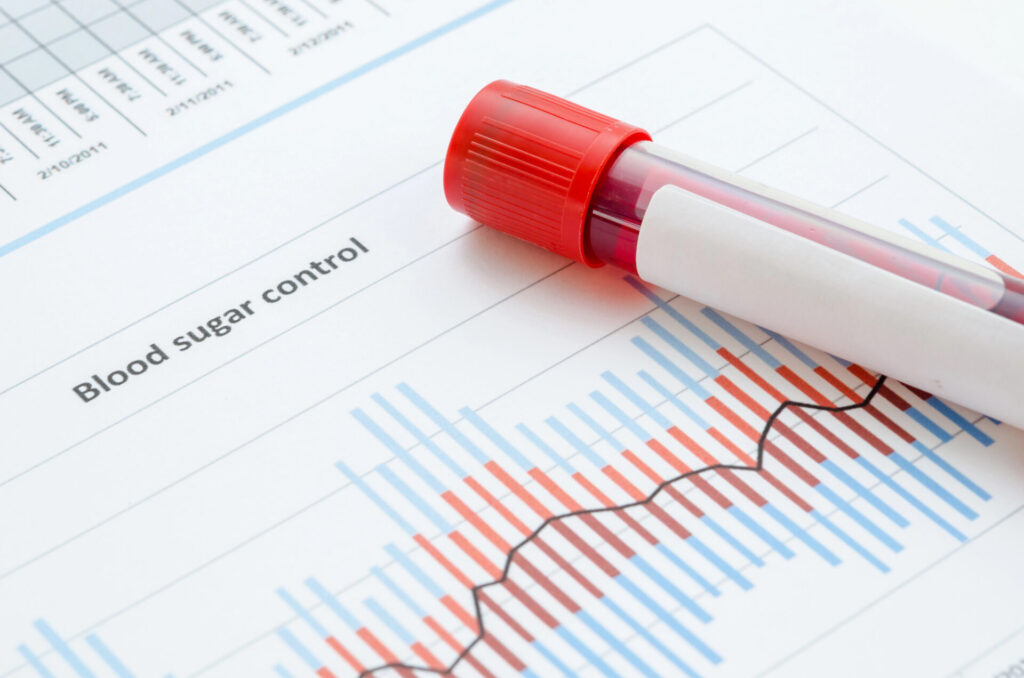Hintonia latiflora, a botanical native to Central America, has been used traditionally to support healthy glucose metabolism. Recent clinical studies validate its use in modern integrative care for managing pre-diabetes and type 2 diabetes mellitus¹. A standardized dry extract from Hintonia bark has demonstrated statistically and clinically significant effects on glycemic control, including reductions in HbA1c and fasting/postprandial glucose levels, with no serious adverse events².
Study Overview
An open-label, prospective, multicenter clinical trial was conducted on 178 patients with pre-diabetes or mild type 2 diabetes. Patients were treated with a dry extract of Hintonia latiflora bark for 8 months, either as monotherapy or in conjunction with diet and oral antidiabetic medications. Key outcome measures included HbA1c, fasting and postprandial glucose, blood lipids, and diabetes-associated symptoms³.
Glycemic Outcomes
HbA1c improved from 7.2% to 6.4%, a relative reduction of 10.4% (p < 0.0001). Fasting glucose decreased by an average of 23.3%, and postprandial glucose by 24.9% over 8 months. These findings are notable, particularly for a botanical intervention without pharmaceutical side effects⁴.
Quality of Life and Symptom Reduction
Participants reported improved neuropathic symptoms, reduced excessive thirst and urination, and decreased episodes of reactive hypoglycemia. The sum score of diabetic symptoms dropped from 4.8 to 1.3. Improvements were also observed in liver enzymes, cholesterol, and blood pressure⁵.
Reduction in Medication Use
Among the 114 participants on anti-diabetic medications at baseline, 45 were able to reduce dosage and 10 ceased medication entirely by the study’s end⁶. This supports Hintonia’s potential role as an adjunct or transitional therapy in glycemic management strategies.
Mechanism of Action
Hintonia is believed to exert its effects through the modulation of insulin sensitivity and pancreatic beta-cell support. Its phenolic compounds may enhance glucose uptake and reduce hepatic glucose production, though further research is warranted to confirm these pathways⁷.
Clinical Implications
Hintonia latiflora offers a promising, well-tolerated option for patients with pre-diabetes or early-stage type 2 diabetes. It may delay or reduce the need for pharmacologic interventions and improve metabolic outcomes with minimal side effects.
References
- Schmidt M, Hladikova M. Hintonia concentrate for the dietary treatment of increased blood sugar. Naturheilpraxis. 2014.
- CDC. National Diabetes Statistics Report. Centers for Disease Control and Prevention. 2020.
- Hintonia latiflora multicenter study. TTNR005. 2022.
- Schmidt M, et al. HbA1c and fasting glucose outcomes. Naturheilpraxis. 2014.
- Study data summary on symptom scores and metabolic markers. TTNR005. 2022.
- Clinical observation on reduced antidiabetic drug dependency. TTNR005. 2022.
- Natural phenolic actions and glucose modulation in Hintonia. Unpublished review.





